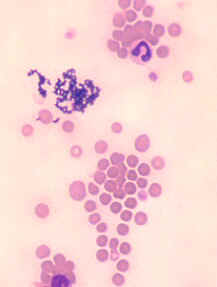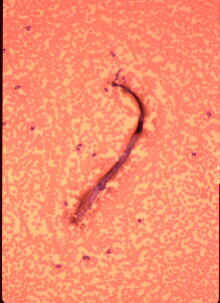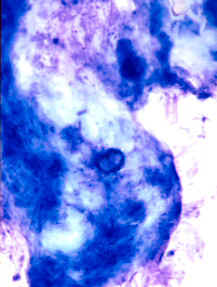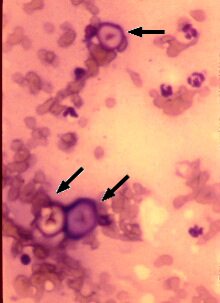Artefacts:
stain
precipitate, pseudolarvae, glove
powder
 Wright's stain, 500x |
Stain
precipitate
Stain precipitate is often confused with
bacteria. This artefact is common in hematologic and cytologic specimens. An excess of
precipitate calls for filtering the staining solution or replacing it. Precipitate can be
distinguished from bacteria by its irregular and more amorphous appearance. True bacteria
such as cocci will have a more discernable spherical appearance, tend to be uniform in
size, and may be found in pairs or chains.
Return
to menu |
| Pseudolarvae ("pseudofilariae")

Wright's stain, 500x |
Pseudolarvae
("pseudo-oocyst")

Wright's stain, 500x |
Textile fibers, dust, and even pollen grains can mimic
parasites or larvae. Generally, their refractile appearance and lack of symmetry allows us
to distinguish these from true microorganisms.
Return to
menu
 Wright's stain, 500x |
Glove powder
This image shows many glove (talcum) powder
crystals (black arrows). These crystals are rounded with an irregular outline and often
have a small "x" or “t”
in their center. They are frequent contaminants when an aseptic sampling technique is
used.
|
Return to
menu



